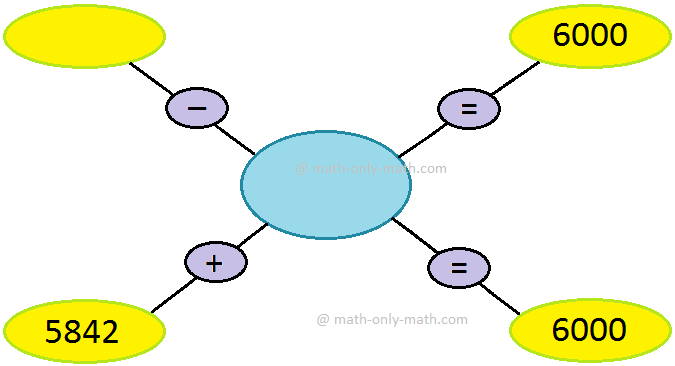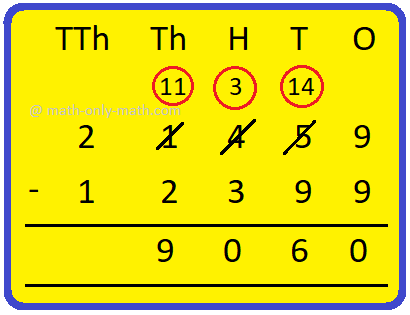Rationalization of Surds
We will discuss about the rationalization of surds. When the denominator of an expression is a surd which can be reduced to an expression with rational denominator, this process is known as rationalizing the denominator of the surd.
If a surd or surd with rational numbers present in the denominator of an equation, to simplify it or to omit the surds from the denominator, rationalization of surds is used. Surds are irrational numbers but if multiply a surd with a suitable factor, result of multiplication will be rational number. This is the basic principle involved in rationalization of surds. The factor of multiplication by which rationalization is done, is called as rationalizing factor. If the product of two surds is a rational number, then each surd is a rationalizing factor to other. Like if \(\sqrt{2}\) is multiplied with \(\sqrt{2}\), it will 2, which is rational number, so \(\sqrt{2}\) is rationalizing factor of \(\sqrt{2}\).
In other words, the process of reducing a given surd to a rational form after multiplying it by a suitable surd is known as rationalization.
When the product of two surds is a rational number, then each of the two surds is called rationalizing factor of the other.
For example, \(\frac{\sqrt{5}}{\sqrt{2}}\) is a surd where \(\sqrt{5}\) is numerator and \(\sqrt{2}\) is denominator. Now for rationalization of surds, if we multiply both numerator and denominator by \(\sqrt{2}\), then denominator will be a rational number.
\(\frac{\sqrt{5}}{\sqrt{2}}\) = \(\frac{\sqrt{5}\times \sqrt{2}}{\sqrt{2}\times \sqrt{2}}\)
= \(\frac{\sqrt{10}}{2}\).
So after rationalization of surd \(\frac{\sqrt{5}}{\sqrt{2}}\), it is becoming \(\frac{\sqrt{10}}{2}\) where \(\sqrt{2}\) is used as rationalization factor.
In other words, if the product of two surds is rational, then each is called a rationalizing factor of the other and each is said to be rationalized by the other.
For complex surds where the surds are in order 2, conjugates are used to rationalize the surds. This comes the from the formula \(a^{2} - b^{2}=(a + b)(a - b)\). So in complex surds order 2 surds get squared off and denominators are converted to a rational number.
Like for example, if rationalization of the complex surd \(\frac{1}{\sqrt[2]{2} - 1}\) to be done, denominator \(\sqrt[2]{2} - 1\) is to converted to a rational number. If a = \(\sqrt[2]{2}\) and b = 1, then denominator is (a - b), if we multiply (a + b), it will \(a^{2} - b^{2}\) and \(\sqrt[2]{2}\) will be squared off.
\(\frac{1}{\sqrt[2]{2} - 1}\)
= \(\frac{(\sqrt[2]{2} + 1)}{(\sqrt[2]{2} - 1)(\sqrt[2]{2} + 1)}\)
= \(\frac{(\sqrt[2]{2} + 1)}{2 - 1}\)
= \(\sqrt[2]{2}\) + 1.
For complex surds in the denominator in other forms or in order more than 2, can be rationalized by using suitable multiplication factors.
Examples of rationalization of surds:
1. For example, the rationalizing factor of √5 is √5 and rationalizing factor of ∛2 is ∛2^2 or ∛4. Since, √5 × √5 = 5 and ∛2 × ∛2^2 = ∛(2 × 2^2) = ∛2^3 = 2
2. (a√z) × (b√z) = (a × b) × (√z × √z) =
ab(√z)^2 = abz, which is rational. Therefore, each of the surds a√z and b√z is
a rationalizing factor of the other.
3. √5 × 2√5 = 2 × (√5)^2 = 3 × 5 = 15, which is rational. Therefore, each of the surds √5 and 2√5 is a rationalizing factor of the other.
4. (√a + √b) × (√a - √b) = (√a)^2 - (√b)^2 = a - b, which is rational. Therefore, each of the surds (√a + √b) and (√a - √b) is a rationalizing factor of the other.
5. (x√a + y√b) × (x√a - y√b) = (x√a)^2 - (y√b)^2 = ax - by, which is rational. Therefore, each of the surds (x√a + y√b) and (x√a - y√b) is a rationalizing factor of the other.
6. (4√7 + √3) × (4√7 - √3) = (4√7)^2 - (√3)^2 = 112 - 3 = 109, which is rational. Therefore, each of the surd factors (4√7 + √3) and (4√7 - √3) is a rationalizing factor of the other.
7. Also rationalizing factor of ∛(ab^2c^2) is ∛(a^2bc) because ∛(ab^2c^2) × ∛(a^2bc) = abc.
8. Rationalize the following surds.
\(\frac{\sqrt[2]{3}}{\sqrt[2]{2}}\), \(\frac{6}{\sqrt{3}}\), \(\frac{\sqrt[3]{5}}{\sqrt[3]{3}}\)
Solution:
\(\frac{\sqrt[2]{3}}{\sqrt[2]{2}}\)
= \(\frac{\sqrt{3}\times \sqrt{2}}{\sqrt{2}\times \sqrt{2}}\)
= \(\frac{\sqrt{6}}{2}\).
\(\frac{6}{\sqrt[2]{3}}\)
= \(\frac{6\times \sqrt{3}}{\sqrt{3}\times \sqrt{3}}\)
= \(\frac{6\sqrt{3}}{3}\)
= \(2\sqrt{3}\).
\(\frac{\sqrt[3]{5}}{\sqrt[3]{3}}\)
Here the denominator is \(\sqrt[3]{3}\) or \(3^{\frac{1}{3}}\), for this surd of order 3, rationalization factor will be \(3^{\frac{2}{3}}\).
= \(\frac{\sqrt[3]{5}\times 3^{\frac{2}{3}}}{3^{\frac{1}{3}}\times 3^{\frac{2}{3}}}\)
= \(\frac{\sqrt[3]{5}\times \sqrt[3]{3^{2}}}{3}\)
= \(\frac{\sqrt[3]{45}}{3}\).
9. Find the rationalizing factor of (√x - ∛y).
Solution:
Let, √x = x^1/2 = a and ∛y = y^1/3 = b.
Now, the order of the surds √x and ∛y are 2 and 3 respectively and the L.C.M. of 2 and 3 is 6.
Therefore,
a^6 = (x^1/2)^6 = x^3 and b^6 = (y^1/3)^6 = y^2.
Therefore, a^6 and b^6 both are rational and as such (a^6 - b^6) is also rational.
Now, a^6 - b^6 = (a - b)(a^5 + a^4b + a^3b^2 + a^2b^3 + ab^4 + b^5)
Therefore the rationalizing factor of (a - b) = (√x - ∛y) is (a^5 + a^4b + a^3b^2 + a^2b^3 + ab^4 + b^5) = x^5/2 + x^2y^1/3 + x^3/2y^2/3 + xy + x^1/2y^4/3 + y^5/3
10. Rationalize the surd \(\frac{\sqrt[2]{2}+1}{\sqrt[2]{2}-1}\).
Solution:
= \(\frac{\sqrt[2]{2} + 1}{\sqrt[2]{2} - 1}\)
As the denominator is \(\sqrt[2]{2} - 1\), for rationalization of the surd, we need to multiply both numerator and denominator by the rationalizing factor \(\sqrt[2]{2} + 1\).
= \(\frac{(\sqrt[2]{2} + 1)(\sqrt[2]{2} + 1)}{(\sqrt[2]{2} - 1)(\sqrt[2]{2} + 1)}\)
= \(\frac{(\sqrt[2]{2} + 1)^{2}}{2 - 1}\)….. as we know \((a + b)(a - b)=a^{2} - b^{2}\)
= \((\sqrt[2]{2})^{2} + 2\times \sqrt[2]{2}\times 1 + 1^{2}\)
= \(3 + 2\sqrt[2]{2}\).
11. Rationalize the surd \(\frac{\sqrt{x}}{\sqrt{x} - \sqrt{y}}\).
Solution:
\(\frac{\sqrt{x}}{\sqrt{x} - \sqrt{y}}\)
As the denominator is \((\sqrt{x} - \sqrt{y})\), if \(\sqrt{x}\) = a and \(\sqrt{y}\) = b, denominator (a - b) is multiplied with (a + b) or \((\sqrt{x} + \sqrt{y})\), it will be rationalized.
= \(\frac{\sqrt{x}\times (\sqrt{x} + \sqrt{y})}{(\sqrt{x} - \sqrt{y})(\sqrt{x} + \sqrt{y})}\)
= \(\frac{x + \sqrt{xy}}{x - y}\)
12. Rationalize the surd \(\frac{2\sqrt{5}}{5\sqrt{3} - 3\sqrt{5}}\).
Solution:
\(\frac{2\sqrt{5}}{5\sqrt{3} - 3\sqrt{5}}\)
As the denominator is \((5\sqrt{3} - 3\sqrt{5})\), if \(5\sqrt{3}\) = a and \(3\sqrt{5}\) = b, denominator (a - b) is multiplied with (a + b) or \((5\sqrt{3} + 3\sqrt{5})\), it will be rationalized.
= \(\frac{2\sqrt{5}\times (5\sqrt{3} + 3\sqrt{5})}{(5\sqrt{3} - 3\sqrt{5})(5\sqrt{3} + 3\sqrt{5})}\)
= \(\frac{10\sqrt{15} + 6\times 5}{(5\sqrt{3})^{2}-(3\sqrt{5})^{2}}\)
= \(\frac{10\sqrt{15} + 30}{25\times 3 - 9\times 5}\)
= \(\frac{10\sqrt{15} + 30}{75 - 45}\)
= \(\frac{10(\sqrt{15} + 3)}{30}\)
= \(3 + \sqrt{15}\)
● Surds
- Definitions of Surds
- Order of a Surd
- Equiradical Surds
- Pure and Mixed Surds
- Simple and Compound Surds
- Similar and Dissimilar Surds
- Comparison of Surds
- Addition and Subtraction of Surds
- Multiplication of Surds
- Division of Surds
- Rationalization of Surds
- Conjugate Surds
- Product of two unlike Quadratic Surds
- Express of a Simple Quadratic Surd
- Properties of Surds
- Rules of Surds
- Problems on Surds
11 and 12 Grade Math
From Rationalization of Surds to HOME PAGE
Didn't find what you were looking for? Or want to know more information about Math Only Math. Use this Google Search to find what you need.
Recent Articles
-
Multiplication Table | Learn Tables from 0 – 25 | Multiplication Table
Jan 14, 25 11:09 PM
In math multiplication table we will learn the tables from 0 – 25. These multiplication tables help the students to learn the essential multiplication facts. Multiplication tables are very important f… -
3rd Grade Math Worksheets |3rd Grade Math Sheets|3rd Grade Math Lesson
Jan 14, 25 11:02 PM
3rd grade math worksheets is carefully planned and thoughtfully presented on mathematics for the students. Teachers and parents can also follow the worksheets to guide the students. -
3rd Grade Subtraction Worksheet | 3-Digit Subtraction Worksheets | Ans
Jan 14, 25 01:57 PM
In 3th Grade Addition Worksheet we will solve how to subtract 3-digit numbers by expansion, subtraction of 3-digit numbers without regrouping, subtraction of 3-digit numbers with regrouping, propertie… -
Facts about Subtraction | Subtraction of Small Numbers|Solved Examples
Jan 14, 25 12:29 AM
The operation to finding the difference between two numbers is called subtraction. Let us know some facts about subtraction which will help us to learn subtraction of large numbers. 1. Subtraction wit… -
Word Problems on Subtraction |Worksheet on Subtraction Word Problems |
Jan 14, 25 12:21 AM
In word problems on subtraction we need to read the question carefully and understand what we need to find out. We know, in subtraction the larger number from which we subtract the other number (the s…





New! Comments
Have your say about what you just read! Leave me a comment in the box below. Ask a Question or Answer a Question.